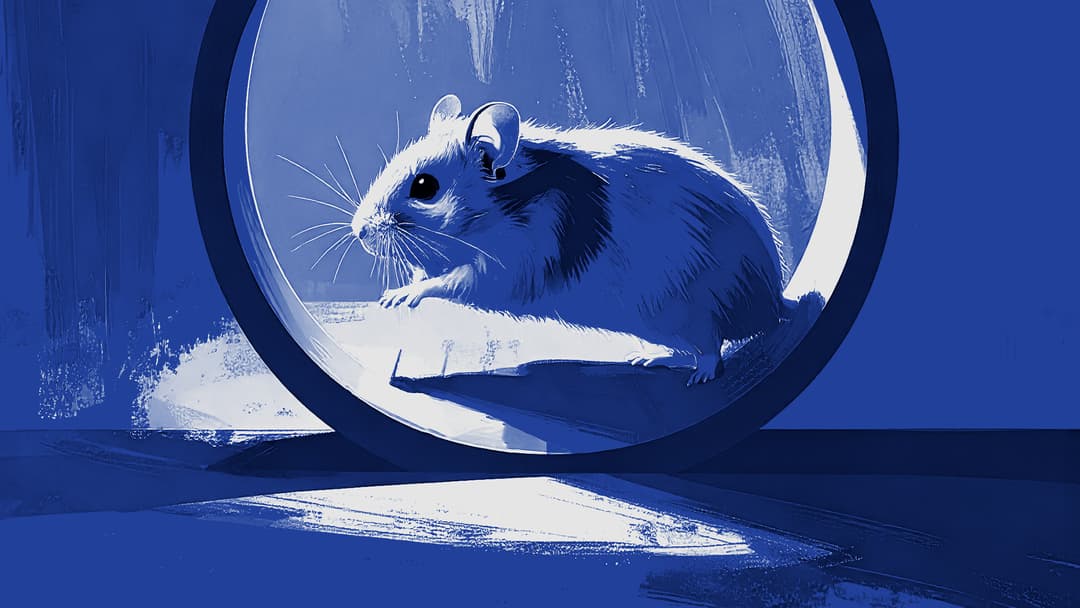Loyalty is, almost by definition, long-term. So, how do companies sustain their customers’ affinity, deeply and over time?
Customer loyalty is a figurative holy grail of business. Long-term customers obviously have a higher lifetime value to companies. Acquiring a new customer can be between five and 25 times more expensive than retaining an existing one1. And, profit and business aside, let’s not forget the simple, good feelings it evokes to know that we’ve done something to make a customer want to come back again.
This is why businesses invest large amounts in customer loyalty programs.
Unfortunately for many of those businesses, a lot of loyalty programs don’t really work. They may get customers back a few times, but those customers may need very little persuading to buy from competitors the next time.
A perhaps obvious but nevertheless important point to make about this is that customer loyalty is a product of much more than just a loyalty program. For example, no loyalty program is going to help if your pricing is out of kilter or does not represent good value. No customer should be expected to return if your staff are unhelpful or rude, or if your return policy is unfair.
But even assuming that there are no other impediments, a poorly designed loyalty program will still not engender long-term loyalty. It may only succeed in eliciting fleeting but unsustainable feelings of goodwill in a customer, akin to the kind of “like” that is ubiquitous on social media.
These transitory likes occupy little more than a few milliseconds in the liker’s life. They are quick and easy, but soon forgotten. They are disposable – the epitome of short-term attention, and the antithesis of long-term affinity.
This is true not just in social media, but in real life, as illustrated by the idea of the “hedonic treadmill” or “hedonic adaptation,” which suggests that positive experiences may temporarily boost our feelings of happiness, but that we will return to a baseline level of wellbeing. We may enjoy a chocolate while we’re eating it, and be satiated for a time afterwards, but we may soon start craving another chocolate. We may be pleased with the new television we bought, but in time will want a bigger or newer one. In these examples, the feeling of liking something may not pass as quickly as it does on Instagram, but it ultimately does pass.
The first million-dollar question, then, is: how can it be sustained?
From transactional to relational
Of course, the feeling of liking is still important. Long-term good feelings start somewhere; they start with liking. And sometimes that grows into love.
The difference between poor and excellent loyalty programs is in how they fail or succeed to grow liking into loving. The best ones build loyalty deeply and sustainably.
It is quite easy to make a start, and to achieve the most basic level of liking in a customer. A customer changes their behaviour to your company’s benefit (i.e. choosing or buying from or in some way supporting your business), and so you give them some points or a small discount or a free item in return. This is a simple exchange. Nothing wrong with it, of course, but at this stage it is still transactional.
Now, “if your motive is simply to drive a sale – a transaction – you can use a transactional reward. This is the bulk of the industry, and it comes from behavioralism. You design a specific consequence (good or bad) for a specific behavior and you are reinforcing or discouraging that behavior, that’s fine.” But what if you want more than just a sale? Well, “from there, you can go up the spectrum – from trying to drive a behavior to developing a long lasting relationship.” 2
To go beyond the transactional and into the realm of the relational, you have to start making the exchange emotional. You have build up positive emotions, repeatedly, consistently, over time. The stronger and deeper those good feelings become, the more powerfully they will influence a customer’s behaviour.
In Thinking, Fast and Slow, Nobel Prize winner Danial Kahneman posited that we have two ways or “systems” of thinking: fast, which is instinctive and emotional, and slow, which is deliberative and logical. Perhaps the most impactful takeout of the book was not that we have two ways of thinking, but that the “fast,” emotional system is much more powerful and influential in our decision-making. This upended previous assumptions that humans are primarily rational creatures. It’s also been confirmed by Gallup research (and “a body of scientific research [that] has repeatedly supported Gallup’s customer engagement research”), which found that “about 70% of decisions are based on emotional factors and only 30% are based on rational factors.” 3
The second million-dollar question, then, is: how do you make the relationship emotional?
From extrinsic to intrinsic motivation
A company-customer relationship can begin transactionally. Think about the ubiquitous “buy ten and get the next one free” mechanic favoured, for example, by many coffee shops. Here, customers are driven by something external or outside of themselves – i.e. the free, eleventh cup of coffee.
But somewhere between the first and tenth cups of coffee, a customer’s motivation might start to become more internal and emotional. For example, perhaps the barista remembers her by name. And then, how she likes her coffee.
Or, perhaps, the coffee shop uses only organic ingredients, and cups made from recycled materials, and offers a discount if you bring your own thermos, all of which aligns with the customer’s own values and makes her feel good about supporting the coffee shop.
By the eleventh cup, the customer is already feeling a degree of emotion and affinity to the shop. She is choosing to support it not just because of the promise of a free cup of coffee, but because she likes the coffee shop’s ethos and feels good when she goes there. The customer may be starting to develop the beginnings of something that is not yet love, but is more than just like.
And perhaps the “hello, Julia, here’s your skinny latte” is just the beginning of a relationship that feels personal. Perhaps, for her hundredth cup, the coffee shop gives Julia a thermos with her name on it, or with a design chosen or created by her.
But what about businesses that don’t get visited every day? What about tyre manufacturers, for example, who most of us only visit every few years? Well, there are ways to build relationships between those visits. For example, a coalition loyalty program, involving other non-competitor brands in different categories, might keep David engaged because he likes the program partners, some of which he is already a loyal customer of. Or he might have expressed a strong interest in mechanics or cars, and get free subscriptions to relevant sites. Or he might have expressed a strong interest in racing, and get news about racing via a newsletter or an app, and receive discounts to motor events, and be able to enter exclusive competitions for trips to Grands Prix, even in years he may not have bought tyres. In these ways, albeit more slowly than Julia is with the coffee shop, David is building positive feelings for, and a relationship with, the tyre brand.
In both the coffee shop and tyre examples, we see evidence of things like relevance, personalisation, alignment with values, and a sense of mutual appreciation. In these and other ways, good feelings are nurtured; emotion-based, intrinsic motivation is strengthened; and relationships are formed. This is the kind of long-term loyalty – perhaps even love – that keeps customers coming back, repeatedly and regularly.
In both the coffee shop and tyre examples, “what’s in it for me,” as a customer, is more than just a freebie or discount. It’s a sense of feeling valued, appreciated and rewarded emotionally for my business. There is a mutual reciprocity that isn’t seen on a bank statement, but is felt on a human level.
The real deal is more than just a good business deal
There’s a difference between an off-the-shelf or standard-issue loyalty program and one that actually pays dividends for years. The former operates exclusively at a transactional and superficial level: do this, get that. The latter works at an emotional level: do this, feel that. This is what turns an introduction into a relationship. And it’s true of any relationship – whether it’s with a person we meet or a company we buy from.





